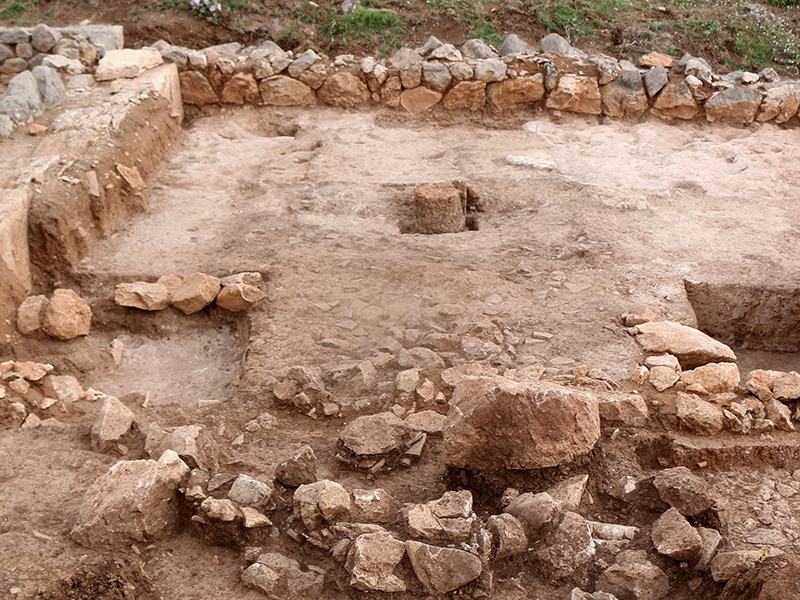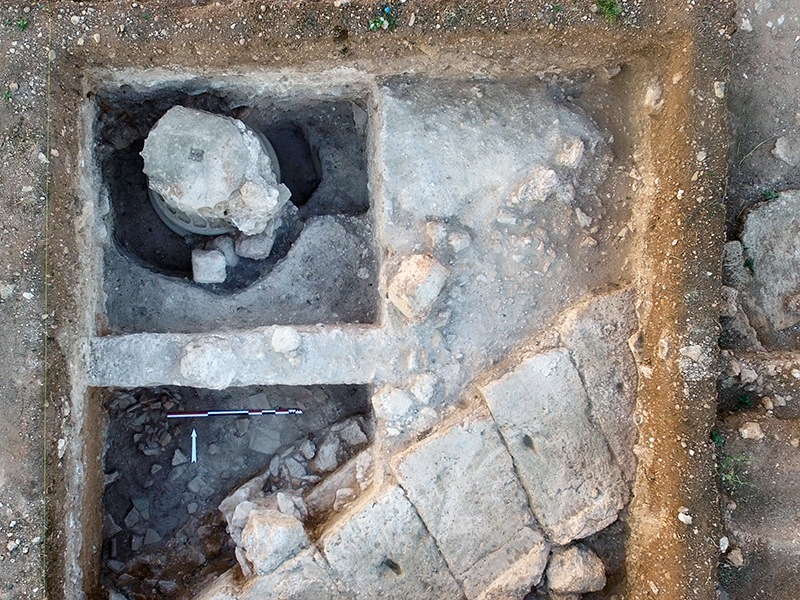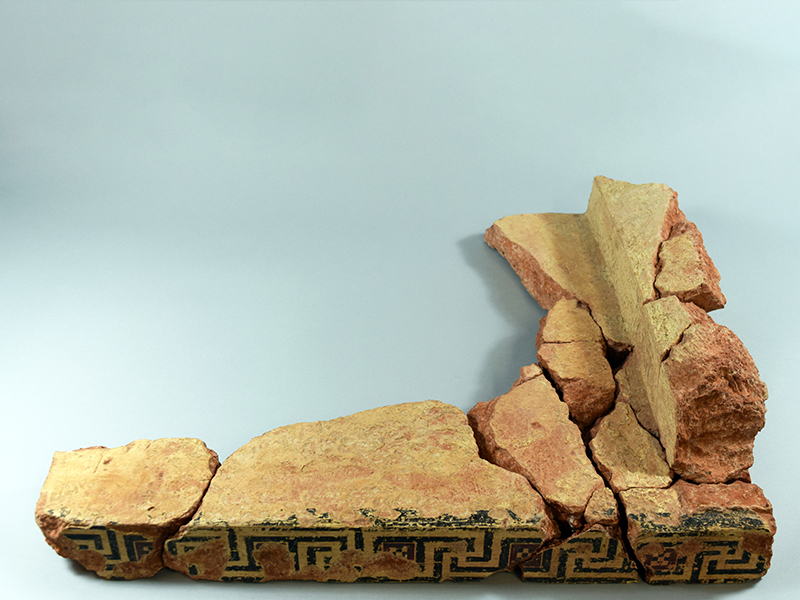
The 2017 campaign of the Onchestos Excavation Project was conducted from June 5 to July 15. At Site A, the team opened 6 new trenches and continued excavation at 10, which had been partially explored in 2016. The main focus of the excavation was the investigation of the destruction layer (hundreds of collapsed roof tiles) inside the annex. This layer was first identified during the 2015 campaign and excavated extensively in 2016. While in the course of the 2016 excavation, no evidence was found to suggest that the collapse of the building was accompanied by fire, in 2017 we were able to identify traces of a moderately intense fire in the eastern part of the annex. Important was the discovery of a stone base for a relatively small oval-shaped column in the center of the building. In the summer of 2017, a small group continued work in the temple area. During the excavation, the stereobate’s northern boundary was identified with certainty.
At Site B, 3 new trenches were opened and excavation resumed in 7 that had been partially explored in 2016. Fieldwork concentrated on the circular structure, the southern rooms (oikoi) of the stoa, and the southeastern part of the large rectangular building. Excavation in the area around the large Ionic column continued and reached its base, which is almost entirely preserved. The column may still be in its original architectural context. If this holds true, its presence together with the Ionic corner capitals found in 2016 will contribute significantly to the architectural reconstruction of the circular structure for which there are no parallels of comparable magnitude in Greece. In the summer of 2017, the excavation continued in the small room (oikos) north of the large rectangular building and commenced work in the adjacent room to the north. The rooms continue to be the only area of Site B to yield relatively rich pottery. The vessels found in the rooms are primarily undecorated but rather well made.


Numerous metal finds, including silver and bronze coins, were uncovered during the 2017 season. Most important among the metal artifacts is a very well preserved long sword, the handle of which retains small traces of its decorated bone (perhaps ivory) plating. The pottery from Site A continued to be rather fragmented, although a perfectly preserved miniature lekythos with painted decoration and a large portion of a Hellenistic lamp were found. At Site B, the number of painted terracotta architectural elements increased significantly and preliminary efforts to reassemble them led to impressive results.
